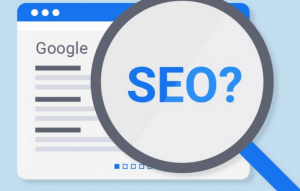Focus on User Experience to meet the needs of searchers. It improves organic search marketing performance, helping websites rank well on the SERPs.
Google’s algorithm has consistently taken the user experience into account. For example, Google doesn’t rank directories because sending users from a page of 10 links to a page of 20 links is a poor user experience.
Thinking in terms of user experience can help with SEO because resultant strategies tend to align with how Google ranks websites.
Here are a few specific ways you can improve your SEO performance with user experience factors including Natural Language Processing, content creation, web design, and more.
Natural Language Processing.
Google’s recent technological breakthroughs like RankBrain and BERT are designed to help Google better understand what people expect to see when they type a search query. They also help Google understand what web pages mean.
An example is a shortcoming of their algorithm that was recently addressed. Google recently introduced their Passages algorithm that allows them to refer searchers straight to a relevant section of a long web page that contains the answer.
Previous to this update Google was unable to adequately rank long web pages.
This is an example of Google using machine learning to provide better answers based on what a web page is about. This is a huge step away from sending users to web pages that contain the keywords in a search query.
Google is understanding web pages in order to match the content as an answer to a search query that poses a question.
It’s not matching questions to keywords. Google is matching questions to answers.
Content Creation for User Experience
This has a profound impact on how web content is planned, with the focus shifting from focusing on creating content around keywords to creating content for users.
This is an example of imposing a user experience point of view on the content creation process.
One has to ask, “What does a site visitor want from this page? What are they trying to accomplish? What is it that they aspire to do?”
Literally, ask those questions and the answers become your content. This will then line up with how Google understands web pages and ranks those pages.
Of course, it’s important to first look at the top one to three positions in the search results and read the content to tease out what question those pages are answering.
Once you find a pattern, you can begin to understand what users mean when they type a particular search query. Once you know that, you can begin the process of writing content.
Content writing that extracts the meaning from the top ten to the top thirty of the search results is going to result in an irrelevant analysis because there will be too many mixed search intents.
Analysis of the top ten with a subsequent segmentation of the positions by search intent is a better way to understand what users mean when they type a search query.
Don’t try to mimic the words on search results. Remember, Google is only ranking the best of what it feels satisfies a query.
By copying the keywords used in a top-ranked webpage, you’re missing out on the opportunity to find a better way to satisfy a search query.
- Old Way:
Research top-ranked sites to extract keywords and write content with those keywords. - New Way:
Research top-ranked sites to understand the latent question being asked and then provide a better answer.
What’s a Better Answer
The better answer is the one that tells and shows the user the how, why, what or when that they are looking for.
Sometimes that means creating custom images to illustrate your message. Sometimes that means communicating the message with a graph that gives a visual presentation to the data.
Use your imagination and ask yourself: How can I make this message any clearer to people visiting my site?
That’s the process of creating content with the user experience in mind.
Web Page Experience
 Google is introducing a small ranking boost for pages that can pass their Core Vitals Test. Core Web Vitals (CWV) measure a site visitor’s user experience.
Google is introducing a small ranking boost for pages that can pass their Core Vitals Test. Core Web Vitals (CWV) measure a site visitor’s user experience.
In an ideal world, most publishers would already be optimizing web pages for a fast user experience.
But in the real world, publishers are limited by the bloated content management systems available to them.
Providing a fast user experience takes more than a fast server, too. The page speed bottleneck happens on the site visitor’s end where they’re downloading your page on a mobile phone through a 4G wireless network with limited bandwidth.
Creating a site with a fast download is good for users and better for publishers. More conversions, more page views, and higher earnings happen when a website optimizes its web pages for speed.
What can you do to create a better user experience on the page?
The first thing to do is visit your own site and read your articles in one sitting all the way through.
Then ask yourself if you feel like clicking through to read some more. If there’s a feeling of fatigue, there are reasons for that and they all relate to user experience.
How to Create a Better Web Page Experience
- Break up your content into smaller paragraphs.
- Use meaningful Heading Tags (accurately describe the content that follows).
- Use bullet points and ordered lists.
- Use more images that illustrate what you’re trying to say.
- Choose images that are inherently lightweight (light shades, less colors, fewer micro details like gravel or leaves).
- Optimize your images.
- Replace images that cannot squeeze down to less than 50 kilobytes (or at least no higher than 100 kb).
- Do not require a minimum word count from your writers.
- Write content that provides useful answers.
- Use graphs.
- Test your pages on different mobile devices.
- Minimize CSS and JavaScript, especially third-party scripts.
- Remove CSS and JavaScript that provide functionality for things like sliders and contact forms when those features are not on the page.
- If possible, reconsider the use of sliders.
- Consider using fonts that are already on visitor’s computers or simply update your font to sans-serif.
- Run your URLs through the PageSpeed Insights tool and follow directions for improvements.
Acknowledge & Mirror Your Site Visitors
Always seek out the opportunity to mirror your customer and site visitor in the images that you use.
Be diverse in your image choice. If your visitors tend to skew older and middle-aged, use images that reflect those users.
Do not make the mistake of mirroring yourself or those within your cultural bubble. Make your web pages welcoming for every segment of society that needs your information.
People tend to see themselves in the images that you use and it makes them comfortable to see themselves or people like themselves reflected in the images used in your web page (if it’s appropriate to use images of people!).
How Does User Experience Impact SEO?
 Google tends to rank sites that are relevant to user queries.
Google tends to rank sites that are relevant to user queries.
Google also tends to rank popular webpages that users expect to see because the goal is to satisfy users.
Creating a site that is frictionless and that people enjoy is one of the fundamental ways of building popularity with users. When people share about a site, what they’re really sharing is the experience they had with that site.
And those are the kinds of pages that people tend to feel enthusiastic about enough to tell their friends about, link to, and recommend. Sites that rank well naturally are the kinds of sites that users feel enthusiastic enough to link to and recommend.
Creating a positive user experience is one of the building blocks of creating good search performance.
From attracting links, increasing page views, improving conversion rates and earnings, a site can’t lose by focusing on the user experience.



